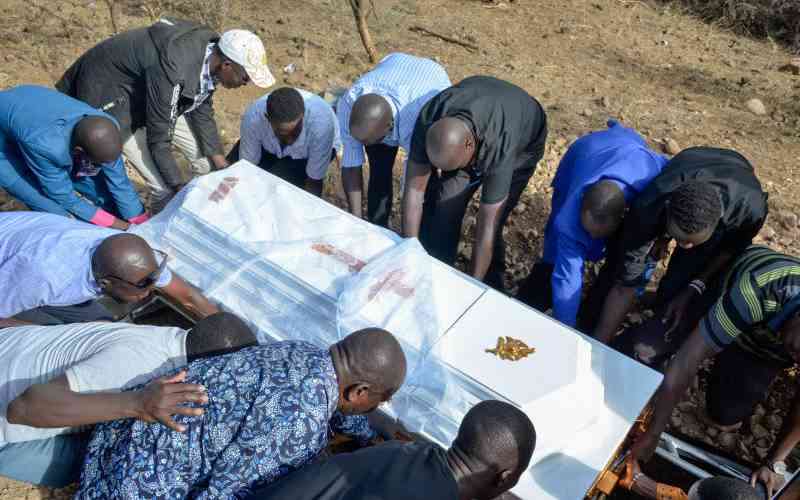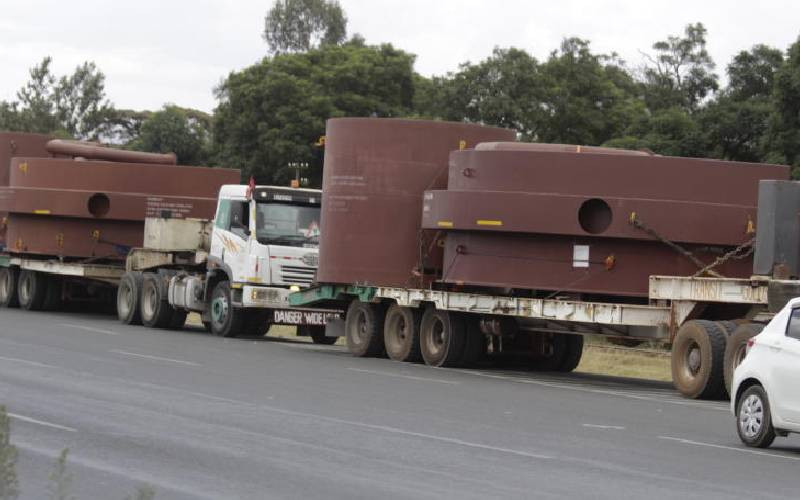By Fred Kibor
MARAKWET, KENYA: A new energy source is increasingly gaining popularity in the North Rift region following frequent electricity outages and high bills.
Biogas production and its use is fast being adopted by residents and several institutions with many discarding the conventional wood fuel and electricity for cooking and lighting their homes.
Stringent measures put in place by the forest department to gain access for forest products like wood fuel has also attributed to the new craze for biogas.
In anticipation of a hike in electricity prices recently announced by Kenya Power Company, residents are turning to use of biogas as an alternative source of energy.
For Esther Rotich and her family, exorbitant energy prices made her family see the need to find an alternative source and biogas was the best choice.
In 2011, they resorted to building a bio gas plant at their Del farm in Kapsaret, Uasin Gishu County.
“Cooking energy made me venture into bio gas. Looking at rising cooking gas and charcoal prices I could not afford them,” says Rotich.
For the Rotich’s, the plant was timely and on point owing to heaps of waste emanating from their large scale zero grazing venture.
The biogas plant in their farm, she explains, is cost effective because it is not only cheap to set up but there are longterm benefits as well.
The family intends to benefit from the biogas affair big time. The plant set up in their farm produces abundant energy and the family intends to commercialise it.
“I intend to use this innovation to earn money. Infact, most of the gas produced goes to waste because we do not have a storage system,” says Mrs. Rotich.
James Kiboi, the manager of Del farm that belongs to the Rotich’s, bio gas production is quite cheap and easy to produce.
He said the waste, consisting of animal dropping and animal food wastage, is collected and put into a collecting chamber where it is mixed up before it moves to a chamber called the doom.
In the doom the waste combines and produces about 17 different gasses, three of which are ethanol, methanol and methyl.
Stay informed. Subscribe to our newsletter
“Methyl is then transported to the house through a pipe where it is used for cooking, lighting and warming the house,” he explains.
The agronomist adds that use of the waste does not end when the gas is extracted and transported.
“What remains after the gas is produced is called slung and is used as fertilizer for the diverse horticultural plants her at the farm,” he adds.
Kiboi said the slung is in fact what is bought as NPK by farmers in agrovet shops.
“We get it here and use it in the farm instead of buying it expensively from the shops,” says Kiboi.
Environmentally speaking, biogas has proved to be an effective source of energy. With this energy, cutting down of trees in charcoal production will be a thing of the past.
“Biogas is one of the best. People and institutions like schools should be encouraged to embrace this source,” Kiboi says.
According to Kiboi the gas can be produced by mixing animal waste and human waste or either of the two separately.
“Given the mass of people in institutions like schools, biogas can be produced using human waste alone. Apart from the benefits of the gas produced, schools can use this method in toilet sanitation,” he says.
But in neighbouring Elgeyo/Marakwet County, use of biogas is gaining momentum in schools.
St Agatha girls’ secondary school in Elgeyo/Marakwet County has completely abandoned the use of wood fuel to cook food to its 410 students population by resorting to biogas.
The school has also connected its science and home science labs to the biogas to save on costs.
“We used to incur a lot of expenses in buying wood for cooking and also acquiring the Liquefied Petroleum Gas (LPG) to be used in practical lessons,” said Ms Margaret Cheboswony the school’s Principal.
She said being a large institution, tonnes of wood would be ferried monthly from the forest to be used in cooking which proved to be a costly affair.
Ms Cheboswony said forest officials through Green Zones Development Support, an NGO, decided to set up a biogas plant for school to mitigate reliance on forest for wood fuel.
A 60m² digester with a capacity of lighting the whole institution was built and so far the biogas is entirely used in cooking and lab operations.
The school uses its dairy cows to produce enough cow dung to feed the biogas digester and the waste from it is not wasted as it is used as fertilizer in the farm.
“The money we previously used in sourcing for the wood for cooking are being awarded to bright but needy through a scholarship program,” she said.
The Principal said that before the end of the year they would have sourced a biogas generator which will completely replace the use of electricity in the school.
She said the school has been turned into a demonstration field where eager villagers from far and wide come to seek knowledge with the need of setting up their own biogas plants.
 The Standard Group Plc is a
multi-media organization with investments in media platforms spanning newspaper
print operations, television, radio broadcasting, digital and online services. The
Standard Group is recognized as a leading multi-media house in Kenya with a key
influence in matters of national and international interest.
The Standard Group Plc is a
multi-media organization with investments in media platforms spanning newspaper
print operations, television, radio broadcasting, digital and online services. The
Standard Group is recognized as a leading multi-media house in Kenya with a key
influence in matters of national and international interest.
 The Standard Group Plc is a
multi-media organization with investments in media platforms spanning newspaper
print operations, television, radio broadcasting, digital and online services. The
Standard Group is recognized as a leading multi-media house in Kenya with a key
influence in matters of national and international interest.
The Standard Group Plc is a
multi-media organization with investments in media platforms spanning newspaper
print operations, television, radio broadcasting, digital and online services. The
Standard Group is recognized as a leading multi-media house in Kenya with a key
influence in matters of national and international interest.








